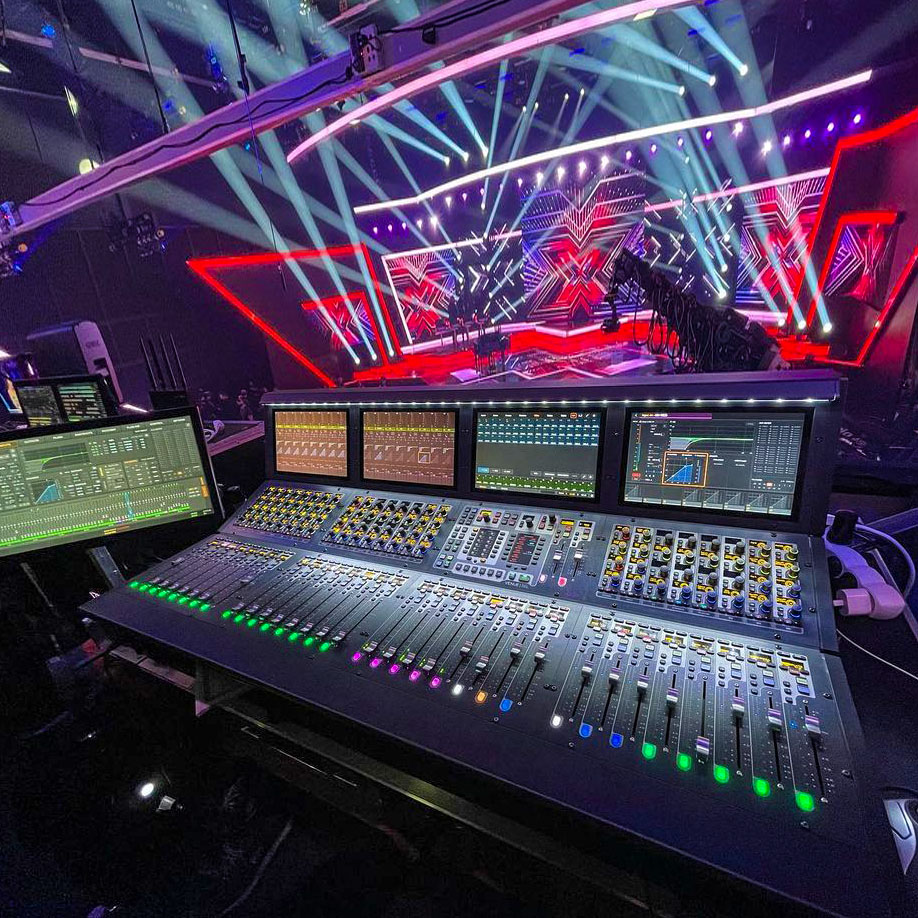
The yellow light on the button indicates that the sound mix is reset.Ĭopyright � 2001-2014 Flextron Bt. the sound levels of drums, bass, and chords) anytime by clicking on theīutton next to the "Chords" slider. To mute the sound of ChordPulse, click on theīutton to the left of the "Master" slider.

#MIXING LIVE SOUND PBS FULL#
Or simply use the default volume mix and sing along with the full accompaniment. Turn down "Drums" and you get a bass and chords only accompaniment, so you can practice as a drummer. For example, turn down "Chords" and you get a drum machine with bass. Use these volume controls to adjust the sound mix to your tastes, or to turn down tracks completely, thereby creating space for your "live" instrument. The sound levels of the drums, bass and chord sections of the accompaniment can be controlled independently: These block the majority of the frequencies from entering the guitar's soundhole, which prevents the major feedback problems you usually get.You can adjust the global volume of ChordPulse using the "Master" slider. I always keep a Feedback Buster - a specially-designed round disk of rubber sold in most music stores - to lend to guitarists who don't have one. Putting a DI box out for the acoustic is the best way to get the best sound you'll need to carefully EQ it to avoid feedback. Sometimes, you'll find players with an acoustic amp, but those generally don't cut through the mix well. Please contact us to renew and continue your support, become one of our new friends, or with questions about Central Sound at Arizona PBS. That way, you're in total control of the tone, and the amplifier on stage can still do its job as the player wishes.Īcoustic guitars are a different matter. We bring classical music to the community through your contributions. In this case, I'll put a DI box between the guitar itself and the amplifier. Sometimes you'll find you need more definition in the bass guitar, or your drummer will want more in their monitors.

In fact, I'm almost always finding myself having to ask the players to turn them down because they're too loud in the house. Clair Global has acquired broadcast event sound reinforcement specialist ATK. Quite simply, in most small rooms, you won't need to mics the guitar amps and bass cabinets. FOH engineer Rick Camp has outfitted his Master Mix Live facility in Las. That way you can still send the snare signal to the reverb unit while not actually putting any in the house! Here's another tip: if you've got a loud snare, but still want to add reverb to it, you can switch the reverb send on that channel to pre-fader instead of post-fader. I also, as usual with most channels, cut out everything below 80Hz. I prefer to compress the kick drum separately, and EQ with a boost in the mid frequencies. Sometimes, I'll mic the high-hat in a small room if the drummer plays it softly, but generally, it's not necessary. Even some small clubs that hold less than 1,000 people may not need amplification on the overheads.

Overheads and cymbal microphones are of low priority. Depending on the quality of the kit, you'll need to compress. If you're low on microphones, you can put one microphone for every two toms, placing them in between.

If you're in a club that holds, say, between 250 and 500 people, you may need to mic them. In this class, you will get to see an entire day of load-in from Seattles Capitol Hill. In this class, Zach Varnell will walk you through the entire live sound production workflow, from loading in a PA and rigging and flying speakers to soundcheck and mixing on the fly. Toms generally don't need any amplification, as they're generally not played enough to warrant dedicated channels. Mixing Live Sound can be one of the most daunting tasks for any engineer. Most drum kits, in a small room, won't need any amplification past the kick drum.įor a good small room, I prefer to mic the kick drum, as well as the snare. In order to deliver the best-sounding mix, you need to take stock of what you can hear in the room naturally, without amplification.


 0 kommentar(er)
0 kommentar(er)
